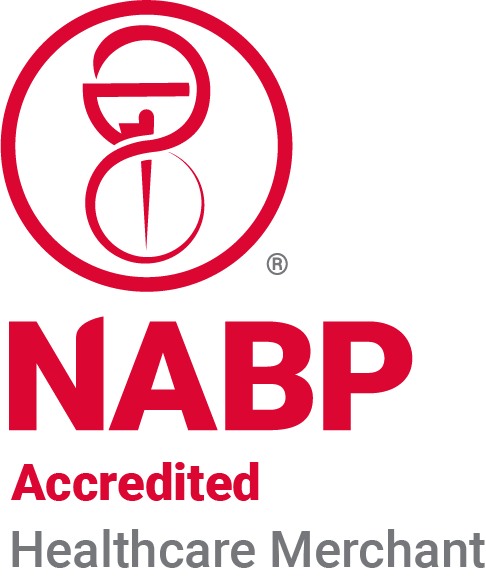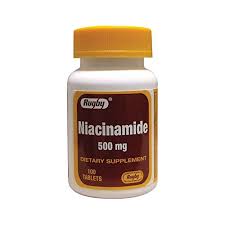Providing Quality & Trust
Niacinamide Tablet
No Info
Starting at $0.18
$0.18 Each
Detailed Description
Niacinamide
nye-a-sin-a-mide)
- Description: Immunomodulator; Nutritional Supplement
- Other Names for this Medication: Vitamin B3
- Common Dosage Forms: Veterinary: None
Used in combination with tetracycline to treat a variety of skin and other autoimmune diseases in dogs. Give as directed; usually give three times a day atthe start of treatment. Improvement may be gradual & take 6-8 weeks.
Side effects from niacinamide alone are rare. Vomiting and reduced appetite (eating less than normal) are the mostlikely side effects. When used in combination with a tetracycline, risk for side effects is greater and include lethargy (tiredness or lack of energy) and, rarely, liver problems.
How is this medication useful?
Niacinamide is used in combination with tetracycline (and other medicines) to treat a variety of skin and autoimmune disorders in dogs. The FDA (U.S. Food & Drug Administration) has approved this drug for use in humans butitis not officially approved for use in animals. The FDA allows veterinarians to prescribe products containing this drug in different species or for other conditions in certain situations. You and your veterinarian can discuss why this drug is the most appropriate choice.
Uses/Indications:
Niacinamide may be useful in controlling a variety of sterile inflammatory skin conditions in dogs, particularly when used in conjunction with a tetracycline, such as doxycycline (or minocycline). Indications include localized and generalized discoid lupus erythematosus (DLE), cutaneous vesicular lupus erythematosus, sterile granulomatous/pyogranulomatous syndrome, sterile nodular panniculitis, cutaneous reactive histiocytosis, pemphigus erythematosus, pemphigus foliaceus, mucous membrane pemphigoid, idiopathic symmetrical (lupoid) onychodystrophy/onychitis, German shepherd dog metatarsal fistulae, vasculitis, arteritis of the nasal philtrum, sebaceous adenitis and dermatomyositis. Non-skin uses include mucous membrane pemphigoid and chronic ulcerative paradental stomatitis (CUPS). Controlled studies demonstrating clear efficacy are lacking, but anecdotally it appears effective in some patients including up to 2/3 of dogs that are treated for DLE. Often used in conjunction with other immunomodulating drugs, such as glucocorticoids, especially in the initial treatment phase. Niacinamide may be particularly efficacious for milder disease forms or as steroid sparing agent. Niacinamide (with a tetracycline) may take 6 to 8 weeks before efficacy is noted.
What are the side effects of this medication?
Side effects that usually are not serious include:
- Reduced appetite, vomiting, diarrhea. Lack of energy.
You don’t have to be overly concerned if you see any of these signs unless they are severe, worsen, or continue to be a problem. Contact your veterinarian if this happens.
Side effects that may be serious orindicate a serious problem:
- Increased liver enzyme level (rare). Your veterinarian will watch for this by performing periodic blood testing on your animal.
- Seizures (rare).
If your animal has a seizure (convulsion), contact your veterinarian immediately.
Contraindications/Precautions/Warnings:
In humans, niacinamide therapy is contraindicated in patients with liver disease, active peptic ulcers, or hypersensitivity to the drug. Use niacinamide/tetracycline drug combination with caution, or avoid use, in dogs with a seizure history. Do not confuse niacinamide with niacin (see Pharmacology & Actions).
Adverse Effects:
Adverse effects of niacinamide in dogs are uncommon, but may include anorexia, vomiting, diarrhea, and lethargy. Occasionally, increases in liver enzymes may be noted. There have been some anecdotal reports of increased seizure frequencies in dogs. Because niacinamide is used clinically in combination with a tetracycline, adverse effects noted may be due to niacinamide and/or the tetracycline.
Drug Interactions:
Niacinamide and tetracycline treatment does not interfere with antibody production associated with routine vaccinations in dogs. Also see the tetracycline, doxycycline, or minocycline monographs for additional drug interactions if using combination therapy.
The following drug interactions have either been reported or are theoretical in humans or animals receiving niacinamide and may be of significance in veterinary patients. Unless otherwise noted, use together is not necessarily contraindicated, but weigh the potential risks and perform additional monitoring when appropriate.
- INSULIN/ORAL ANTIDIABETIC AGENTS: In diabetic humans, dosage adjustments for insulin or oral antidiabetic agents have sometimes been necessary after initiating niacinamide therapy.

Powered by nopCommerce
This site is running in live payment mode. Real payments will be processed.

